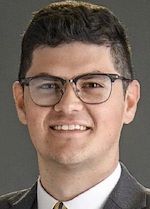Publication
Article
Urology Times Journal
Malpractice Consult: What you should know about jury selection
Author(s):
Here are some ways in which lawyers can remove potential jurors from a case.
Austin Richards

The second installment in our series on the anatomy of a jury trial focuses on jury selection: the process whereby citizens are summoned to a courthouse, required to take off work, and paid a small stipend to perform an important civic service. It is the duty of a juror to determine, alongside 11 strangers, the fate of the parties involved based solely on the evidence presented and the applicable law. However, as Robert Frost put it, a “jury consists of 12 persons chosen to decide who has the better lawyer.” And he may have been right. After all, jury selection allows lawyers to decide who decides the case. And many is the case that is won at this stage.
Take a medical malpractice lawsuit. Let’s say a urologist is being sued by a patient, and the facts can be seen to favor both sides. Any 2 assortments of 12 people may render different verdicts. But what if the jury consisted of urologists only? The plaintiff probably wouldn’t like their chances. And neither would the urologist if the jury were made up solely of iatrophobes. That’s where lawyers play a pivotal role.
Typically, the summons to appear for jury duty is accompanied by a questionnaire that helps the court and the attorneys understand jurors in terms of education, occupation, and potential bias. Lawyers thus have a general idea of who jurors are long before asking them a single question.
The questions themselves are designed to identify the type of juror someone would make. When a case involves a motor vehicle accident, people will be asked whether they’ve ever been involved or injured in an accident, whose fault it was, etc. Their answers tell lawyers how they’re likely to react as jurors to the facts of a case and, specifically, whether they might be biased against their clients.
So let’s talk about how lawyers eliminate jurors. In most jurisdictions, lawyers are allowed a set number of peremptory strikes. Meaning that they can send a juror home for any reason—occupation, age, height, haircut, you name it!—and without specifying the reason. As you’d expect, these strikes were used as instruments of discrimination. So in 1986 the US Supreme Court established the Batson challenge: the objection to an opposing counsel’s use of a peremptory strike to exclude a juror on the basis of race. When this challenge is made, the lawyer doing the excluding must give a reason other than race why the person should not sit on the jury.
Strike for cause is another method for eliminating potential members from the panel. For instance, if a potential juror in a murder case in which the sentencing options include the death penalty states that he or she would be unable to render such a verdict for moral reasons, that statement may indicate the person’s unwillingness to apply the law to the facts. And unlike with a peremptory challenge, there is no limit to the number of strikes for cause a lawyer can deploy.
Otherwise, lawyers rely largely on their belief that jurors will act in good faith and apply the law to the facts in an unbiased manner. Once a jury is selected, it’s time for opening statements. In the next column, we will explore what makes such statements effective.





























